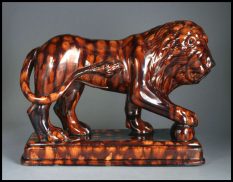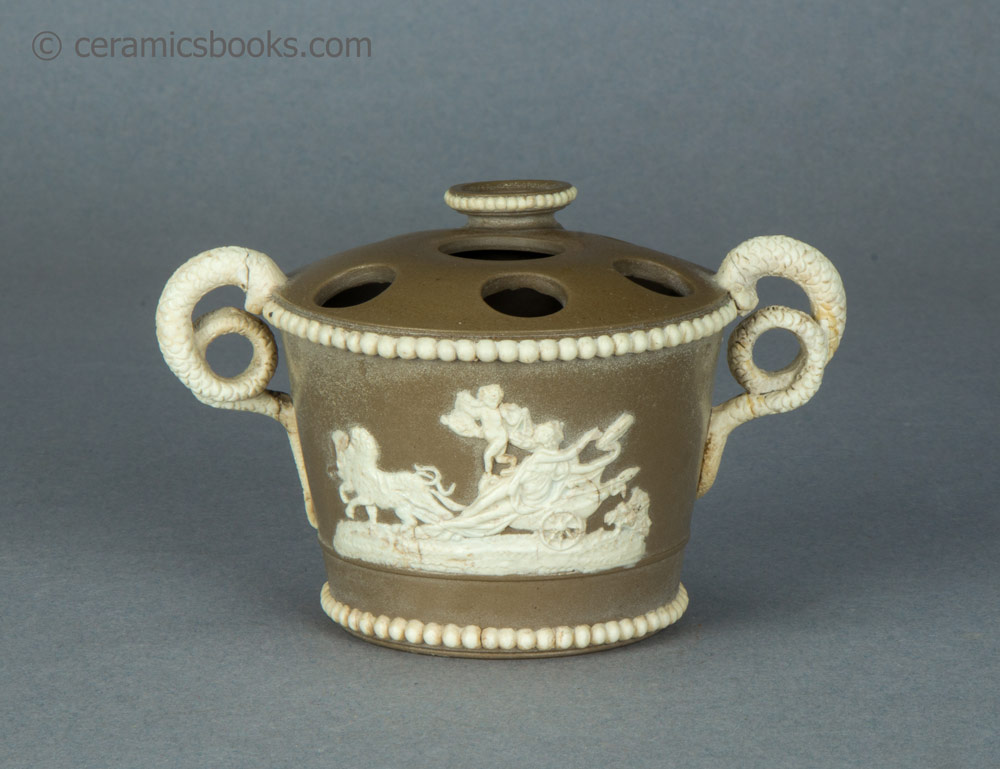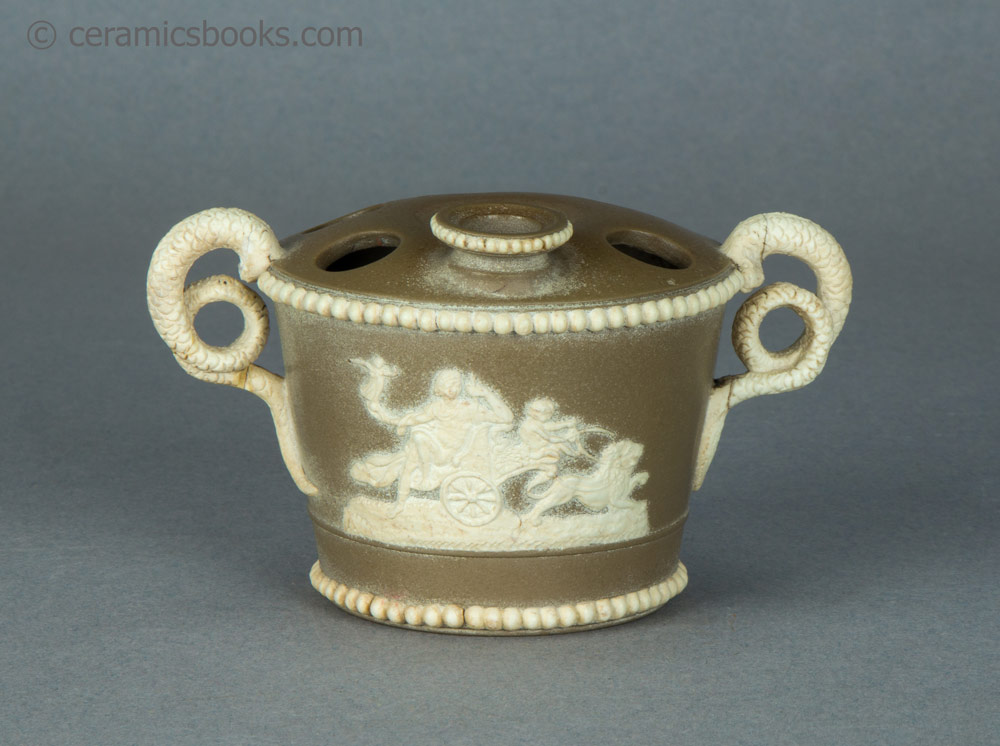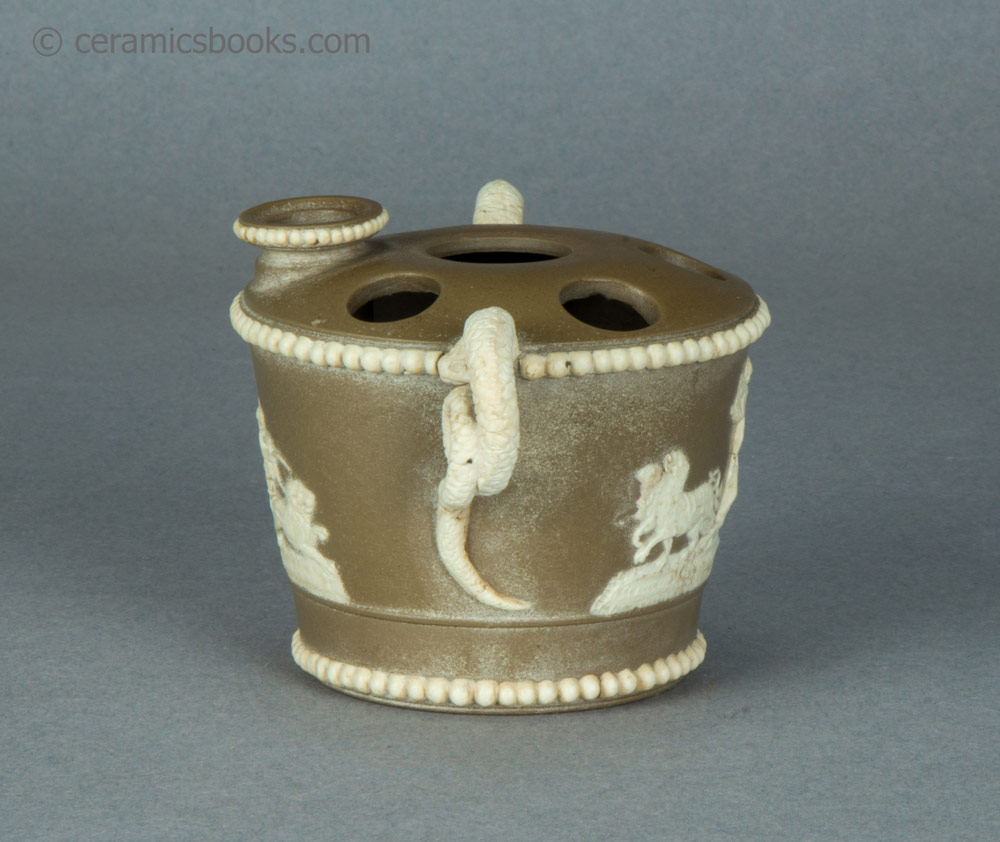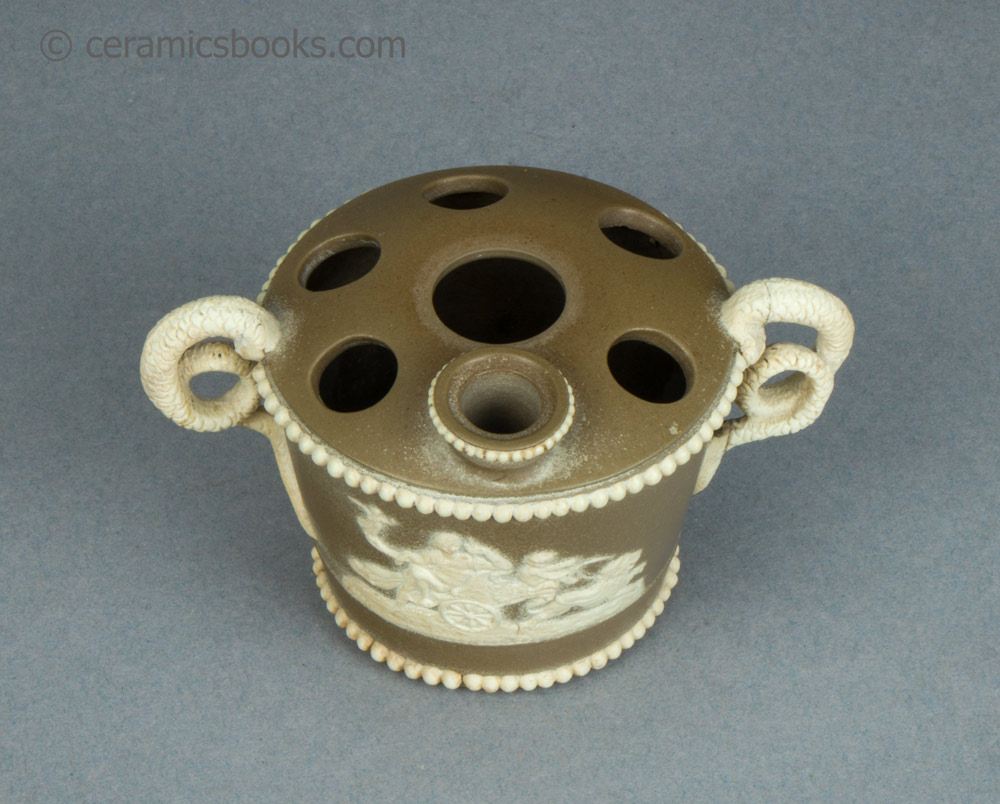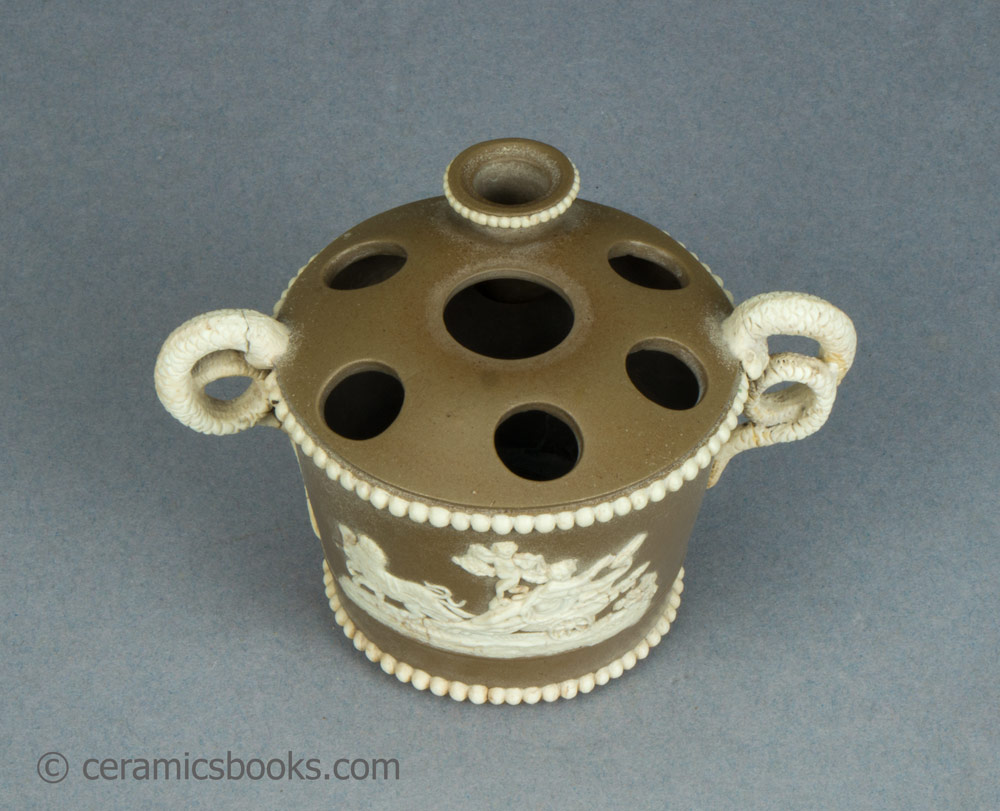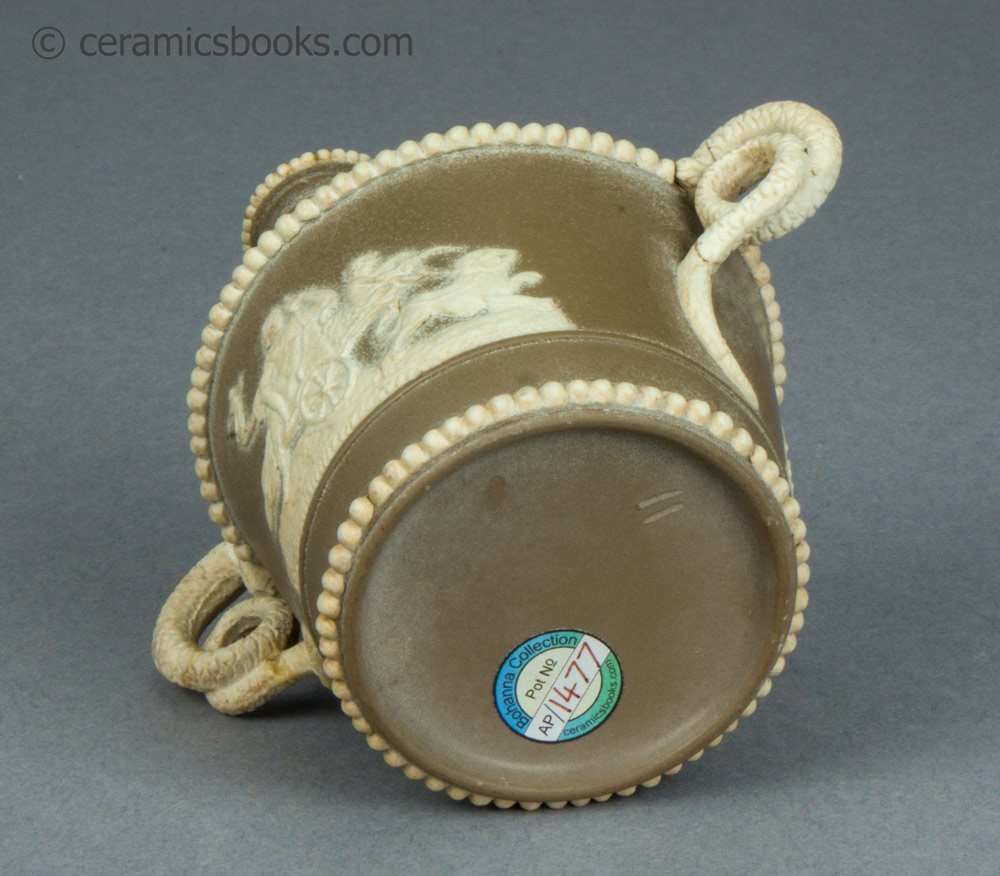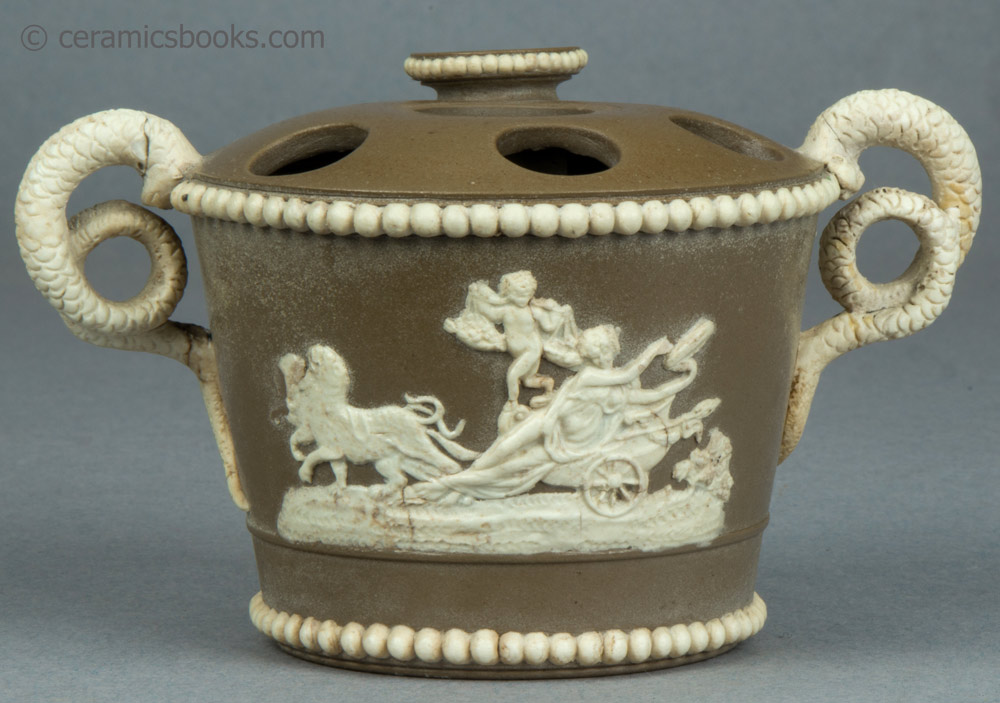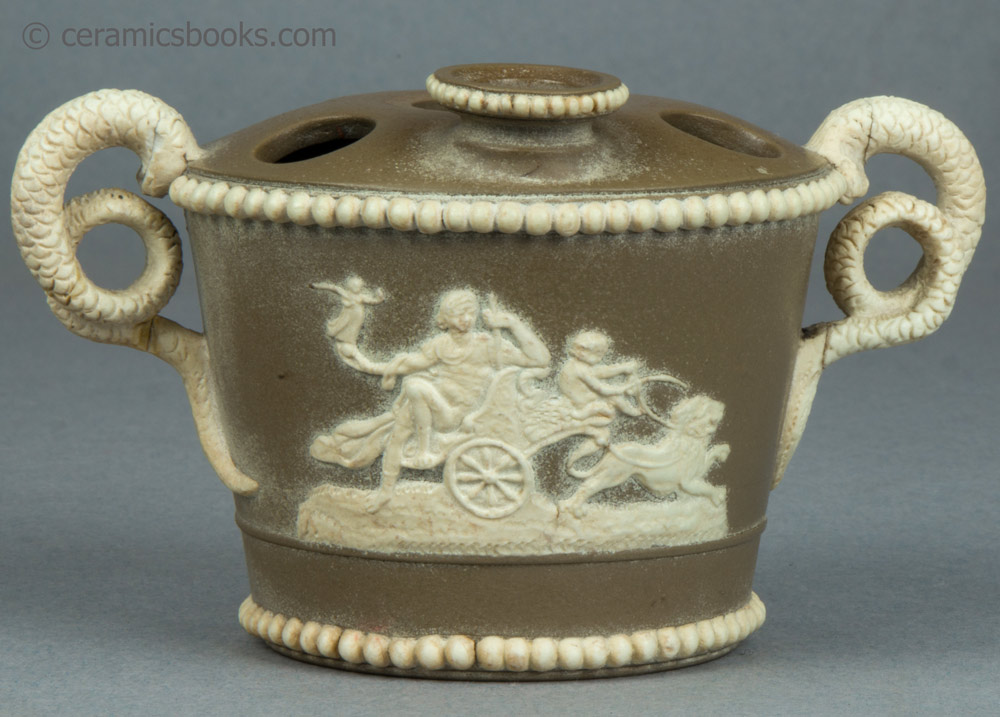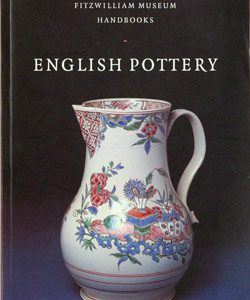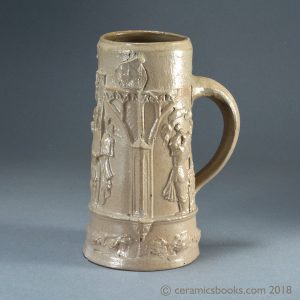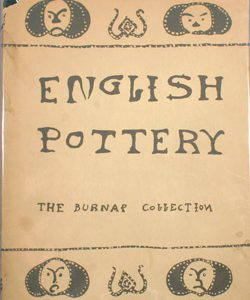A very rare ‘Pyrophorous vase’ in a greenish brown stoneware body with a very fine vapour glaze. The body has two white clay sprigs: a classical figure reclining in a two wheeled chariot pulled by a lion and driven by a cupid figure. The other sprig depicts a robed woman reclining in a two-wheeled chariot whilst playing a tambourine, pulled by two lions, with a cupid figure on the arm of the chariot with a yoke with baskets of fruit and flowers.
The body has two white clay serpent (snake) handles. The base is inscribed with ’11’. The body and sprigs show an anusual cloudy scumming effect which was probably a direct result of the strong acid used in these unusual pots.
According to Reilly (Wedgwood the New Illustrated Dictionary. 1995), a pyrophorous was a form of instant light box introduced in 1810, which were more convenient than a flint and steel tinderbox to produce a flame [they were also very dangerous]. They consisted of a sliver of wood tipped with sulphur which ignited upon touching concentrated sulphuric acid. Wedgwood appears to have been the first to make these at Etruria in a variety of different bodies from 1812 to 1817. By about 1827 production by all manufacturers had probably ceased due to the invention of ‘Lucifers’ (striking matches) by John Walker of Stockton-on-Tees. They were also made by Spode and Josiah Byerley.
This example is not illustrated in any of the literature in my library of ceramics books (over 900 titles). It may have been made by Wilson (David Wilson, Church Works, Hanley, c.1802-1818) as it has some similarities in style and body with other Wilson products. In any case it is probably an unrecorded shape and is extremely rare.
Pot ID: AP/1477
Dimensions: 78 mm highest to top of ‘inset pot’.
Net Weight (grams): 168
Date: c.1810-1827.
Condition Report:
Both snake handles have been re-attached with glue, with one also broken into two pieces. The face of one of the lion sprigs is chipped off. The surface of the pot has been affected by the concentrated sulphuric acid it held.
